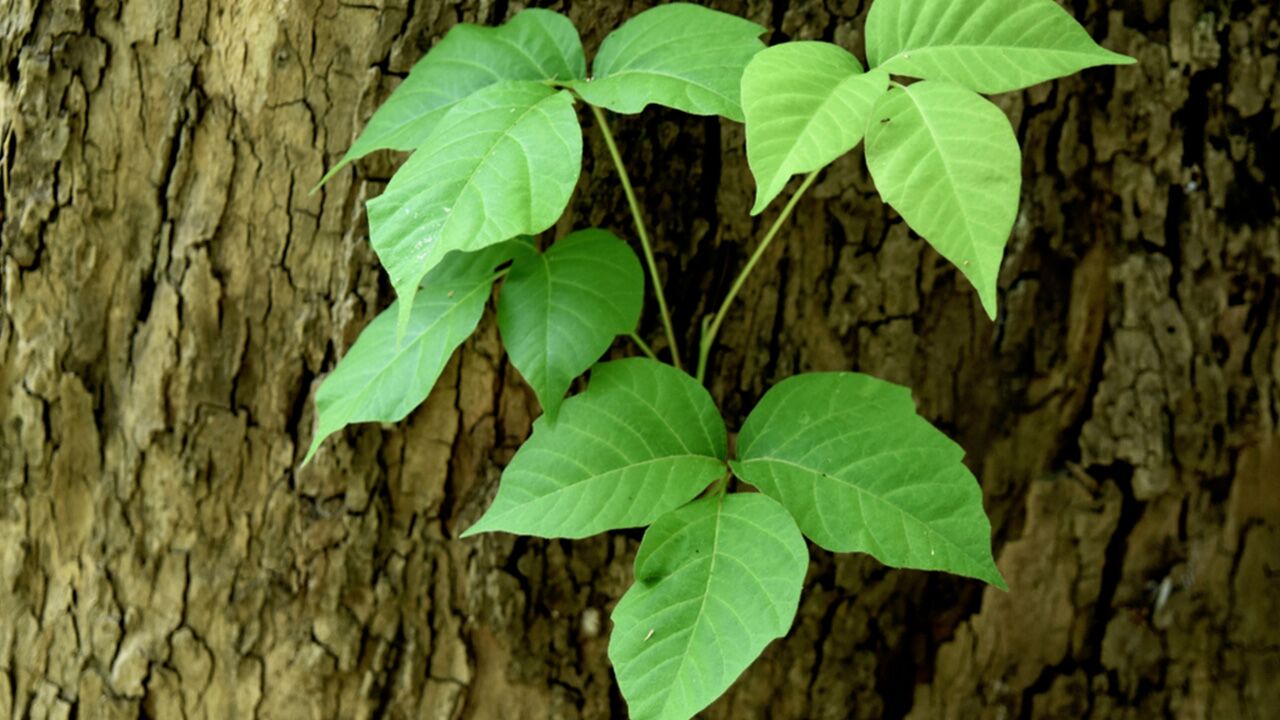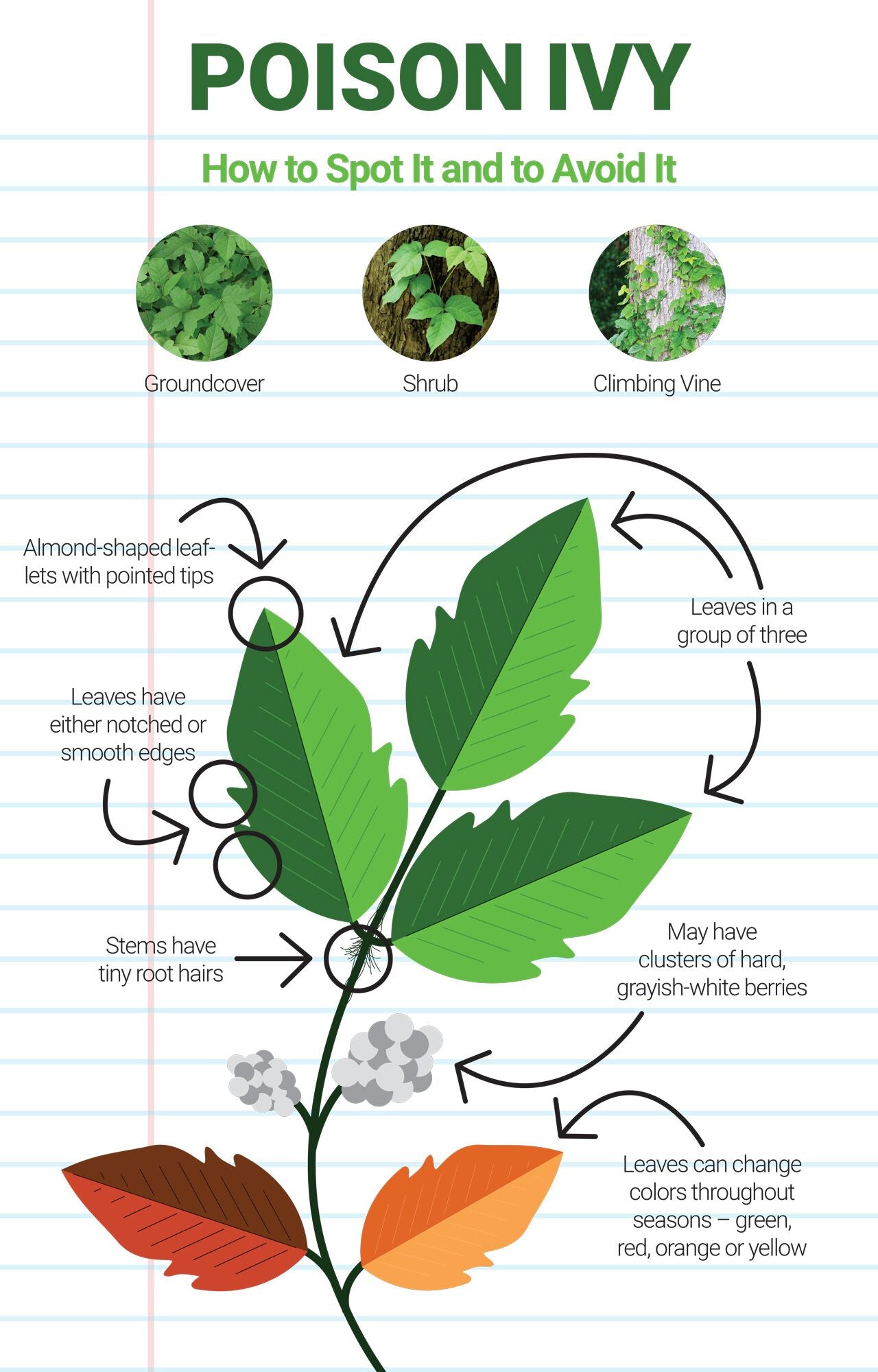Poison Ivy: How to Spot It and How to Treat It
 By: by Amino Science
By: by Amino Science

If you have ever lived near a forest or explored wooded areas, you may be familiar with the rhyme, “leaves of three, let it be.” Referring to poison ivy, if you brush up against this plant, your body may react with a very irritating, itchy rash that takes weeks to heal. You can avoid a poison ivy rash by knowing how to spot it, but if you do brush up against this poison plant, then here's how you can treat your poison ivy symptoms and find relief.
How to Spot Poison Ivy
Common to North America, poison ivy, botanically known as Toxicodendron radicans, is found throughout most of the United States, including all states except Hawaii, Alaska, and California, and in Canada. It is highly adaptable and can grow as a vine that climbs trees and walls, a bush, or along the ground. If you live in the Northern and Western United States, you most likely see western poison ivy in its shrub form, while residents of the South, Midwest, and East Coast encounter it as eastern poison ivy in the form of a vine. The poison ivy plant can be found in both high traffic areas and out on trails, where you’ll spot it in your yard, climbing up fence posts and trees, and growing in your flower beds and gardens.
To spot poison ivy, look for almond, oval-shaped leaves in a group of three. Some have smooth edges, while other varieties have notching. Poison ivy changes color throughout the seasons—it’s red in springtime, green during summer, and orange and yellow in autumn. You can also see green or white berries sometimes, which are consumed and then dropped by birds and other wildlife.

What Causes a Poison Ivy Rash?
The first indication you’ve come into contact with poison ivy leaves is the persistent itching. Soon after, a red rash will appear that has blisters and raised bumps. The reason for these symptoms is the body’s allergic reaction to the urushiol, an oil within the leaves, roots, and stem of the plant. This sticky poison also lurks in the leaves, stems, and roots of poison oak and poison sumac.
Urushiol is odorless, colorless, and extremely viscous and can remain toxic for a long time after a plant has been pulled or cut. Direct contact with the plant isn’t always necessary to come in contact with urushiol oil. Tools, pets, and other outdoor equipment can pick up the oil and then transfer it to you.
Around 85% of the population has an allergic reaction after coming into contact with poison ivy and suffers from the itchy, painful skin rash that is the result. When urushiol gets on your skin, your body identifies it as an invader and triggers an immune response. This cascading effect involves swelling and redness of the skin, an itchy and irritating rash, followed by blistering.
It typically takes 24 hours or more before the signs of allergic contact dermatitis from poison ivy develop and can take at least a couple of weeks for healing to take place. Infection from excess itching or bacteria entering through an open wound may prolong healing. While you can spread the oil from your clothes and other items to someone else, the rash itself is not contagious and skin-to-skin contact should not be a concern.
How to Treat a Poison Ivy Rash
The rash from poison ivy will heal on its own with time, but the other symptoms of itchiness and skin irritation can be quite bothersome. The following poison ivy remedies may provide some relief.
Over-the-Counter Treatments
You're probably already familiar with these itchy-skin over-the-counter remedies, so let's dive in!
- Calamine lotion: Probably the most well-known treatment for poison ivy, calamine is a mixture of zinc oxide and ferric oxide. Zinc oxide acts as an astringent that soothes itching and ferric oxide combats itching as well. While helping to prevent scratching and speed healing, there is less chance for a bacterial infection to develop.
- Hydrocortisone cream: Used to calm itching and soothe inflammation, 1% hydrocortisone cream can be found at every grocery and drug store and applied directly to the rash.
- Antihistamine: You may find relief from your itching and irritation by taking an oral antihistamine that calms the reaction in your body. Claritin and Benadryl are effective brands that also offer nighttime relief.
- Aloe vera gel: Aloe directly from the plant or a pure aloe gel from the store can soothe an itchy rash and promote healing.
- Poison ivy soap: The shelves at the drugstore carry many varieties of scrubs and soaps used to combat poison ivy rashes. If you know you’ve come in contact with the plant, wash the area thoroughly with medicated soap to clear any oil. If a rash is already present, gently wash the area with a good lather of soap and rinse.
Home Remedies
Poison ivy medicine can also be found right in your kitchen cabinet or pantry. Here are several natural home remedies to soothe itching, calm an inflamed rash, and speed healing.
- Cool compress: To calm itching and redness, apply a cool, wet compress for up to 30 minutes. You can also use cooled black tea and apple cider vinegar as a substitute to cool water to help relieve itching and minimize inflammation.
- Honey: Honey is a treatment used for many skin allergies, including poison ivy. Gently slather a small amount over the rash, allowing it to dry, and then rinse in the sink or shower.
- Baking soda: To create your own anti-itch paste, mix baking soda and water and apply to the rash, allowing it to dry. If you have a significant rash on your body, you can dissolve baking soda in your bathwater and soak for several minutes.
- Oatmeal paste: According to research, oatmeal has antioxidant and anti-inflammatory properties that can help aid a variety of skin conditions. Found in a store-bought product or right from your pantry, oatmeal added to a warm bath can help soothe a painful rash.
- Bentonite clay: Found in many beauty products, bentonite clay is used to treat a variety of skin conditions and irritations, including poison ivy rashes. It can be found in powder form and when mixed with water or apple cider vinegar makes a thick paste that can be applied to the rash.
- Apple cider vinegar: A pantry staple with versatile uses, apple cider vinegar is effective at temporarily relieving itching. Mix with cold water in a 1:1 ratio and apply to the infected area with a washcloth or, if possible, submerge the rash in a bowl or tub. Repeat daily until the rash begins to dry and heal.
- Witch hazel: Witch hazel is an effective natural poison ivy remedy that can be used on the whole family. Using a cotton pad, apply gently over the entire rash to relieve inflammation and calm itching.
- Jewelweed: A Native American herbal remedy, jewelweed helps by blocking the toxic effects of urushiol. If it grows in your area, you can boil diced leaves in water until it forms a dark orange liquid. Apply the cooled liquid to your rash or make soothing quick-use ice cubes by freezing the mixture in trays.
Some people have a very dangerous reaction to poison ivy; the eyes and mouth can swell, swallowing and breathing can become difficult, and a fever can develop. If this ever happens to you, or the rash covers an extensive portion of your body, seek medical attention immediately. If you try over-the-counter medications or homemade remedies and cannot find relief after a week, see your doctor. If the rash is severe or begins to show signs of infection, stronger medications may be necessary.
In times of illness, it's always helpful to boost your intake of essential amino acids, the building blocks of protein. The easiest way to do this is with an essential amino acid supplement designed to increase immunity and help you heal faster. Find out more here.
How to Avoid Poison Ivy
The best way to avoid brushing up against this poisonous plant is to bypass areas where it grows. If you do head out into the woods or an area where poison ivy is prolific, cover up with long pants, a sleeved shirt, boots, and tall socks. If you’re working in the garden or doing yard work, wear gloves and keep your eyes open.
Immediately upon returning home, remove all clothes and run them through the hot cycle of the wash. If you know you came in contact with poison ivy or want to prevent a rash just in case, get in the shower and wash your skin and nails with soap and warm water. Dish soap can also be useful in effectively removing any poisonous oil from your body. Many times if you are proactive about washing your skin within an hour of exposure, the risk of the rash developing or its severity can greatly be reduced. Also be sure to wash any outdoor items, gardening tools, and other equipment with water and soap.
If you are headed out for a hike or to the campsite, pack a poison ivy treatment kit that contains dish soap or poison ivy scrub, water, and rubbing alcohol. If you do become exposed to poison ivy, you will have a few tools to help combat a potential allergic reaction.

Up to 25% off Amino
Shop NowTAGS: conditions natural cures
Join the Community
Comments (0)
Most Craveable Recipes




 833-264-6620
833-264-6620



















